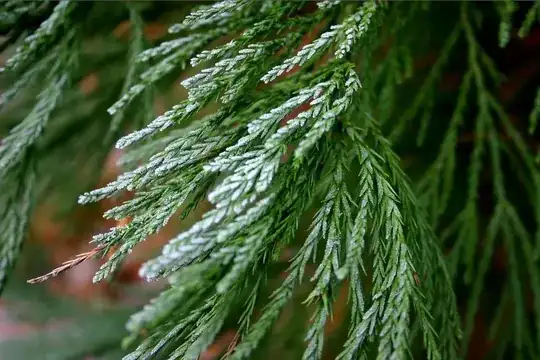I live in Portland, OR and I have a 100+ ft sequoia in my back yard. Keeping up with the falling needles/leaves is a year-round project. I've often wondered if they would make good compost. And yesterday there was a sever windstorm has blanketed my raised beds (and much of my yard) with a half-inch of sequoia needles. I'm considering just leaving the layer of needles at the base of my plants to act as a mulch. Does anyone have experience with this? Is this a good idea?
-
have you looked into mushrooms cor composting the needles? – black thumb Sep 10 '20 at 00:53
-
1I haven't tried this in an organized way, but I do notice that mushrooms seem to grow in the piles of coniferous needles. If I dig a few inches into the piles around the base of the sequoia it seems to compost its self pretty well. I don't know the nutrient content, but the color and texture look like potting soil. – emersonthis Sep 10 '20 at 16:19
-
the stuff that looks like compost probably is compost then – black thumb Sep 14 '20 at 21:57
2 Answers
Conifer needles from pines typically are very acidic however they dissolve as they decompose.... Sequoia needles can be composted but it takes a while. One trick is to heat up the pile
- 463
- 2
- 4
-
Any idea what the pH of all-sequoia needle compost would be? Is it so low I'd need to buffer it with something else? Or maybe just too low to grow certain crops? Thanks for your thoughts. – emersonthis Sep 30 '20 at 00:18
-
1Giant sequoia grows in it's native range, pH of the soil is between 5.5 and 7.5. For those that leave the needles there on the ground, they will begin to break down naturally and the microbes (decomposers) in the soil will neutralize them. Reality giant sequoia decompose slowly....... in the wild sequois relies on periodic wildfires to purge forest floor debris. Don't bother making compost/mulch of sequoia needles, just let em dry and burn em and spread the ash as a source of fertilizer. – LazyReader Sep 30 '20 at 03:34
-
Interesting. Can you say a little more about why the ash is preferred to composting? – emersonthis Oct 01 '20 at 04:16
-
1Ash is water soluble. Like I said the tree thrives in periodic wild fire to purge understory vegetation. And the ash is a good top dressing. – LazyReader Oct 01 '20 at 05:32
I have the same situation as you. I'm also in Portland. My backyard neighbors have a giant sequoia, & as I prepped my raised beds today, the needles were everywhere (apparently they're actually the equivalent of pine cones https://www.fs.usda.gov/Internet/FSE_DOCUMENTS/fsbdev3_058995.pdf).
My impulse was to generally remove them, but not sweat every last one. That seems borne out from reading. Conifer droppings (needles, pine cones, etc) break down much slower, so they're not ideal as compost, & articles I've read suggest keeping them to 10% of compost composition (as "brown" material).
But as insulating mulch, seems like they do the trick for those same reasons. Related reading:
https://www.thisoldhouse.com/landscaping/21213325/should-i-mulch-with-pine-needles
https://www.hunker.com/12547097/are-pine-cones-good-for-mulch
- 111
- 3
